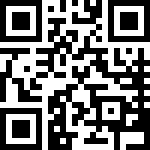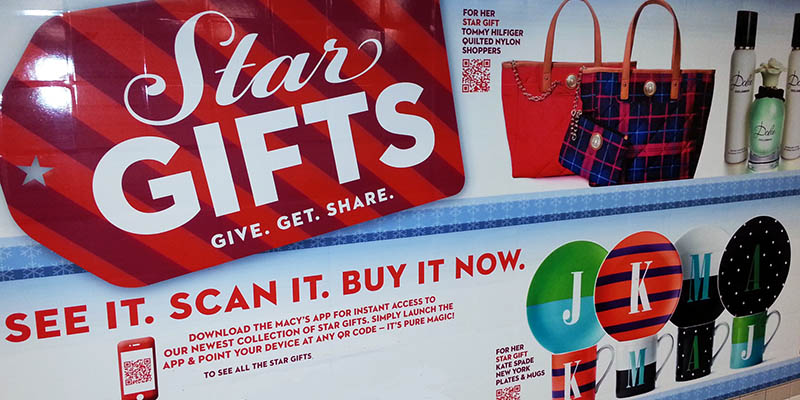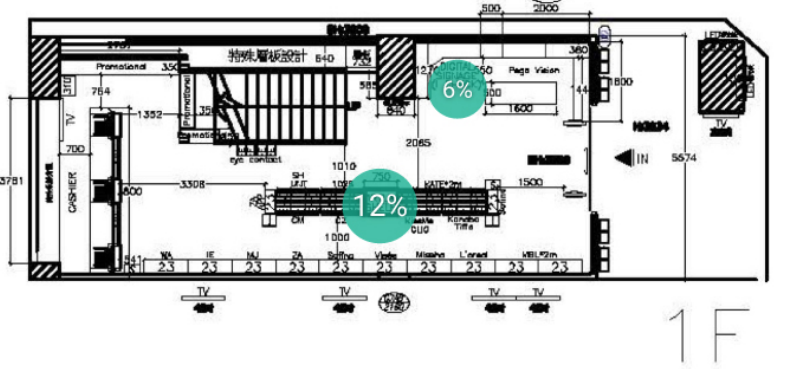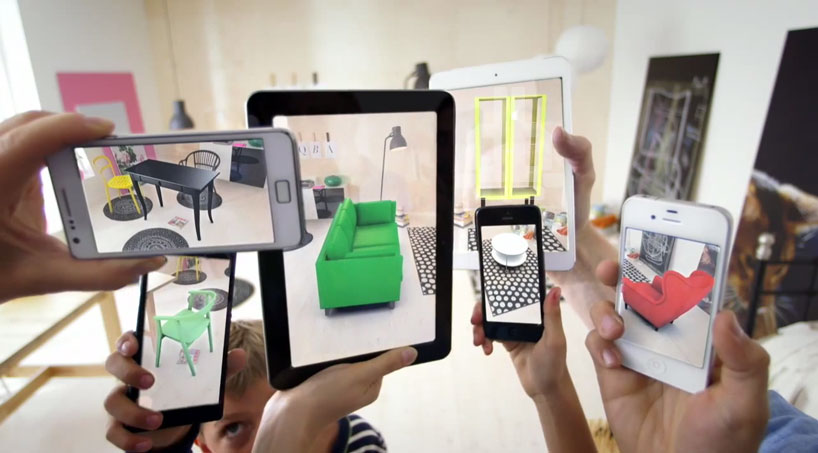Part 4: Practices and Strategies for Pop-Up Retailing – Support Activities
Chapter 15: Technology and Innovations in Pop-up Retail Operations
Chapter Overview
This chapter will introduce the role of technology and some innovative solutions for pop-up shops, examples of customer experiences that depend on new technologies to create virtual shops and a specific look at some best practices for Customer Relationship Marketing tools in the context of a temporary store.
Learning Objectives
Upon completion of the chapter, readers will be able to:
- Recognize the use of technology in a pop-up shop.
- Evaluate the effect of technology on creating a multi-sensory experience for pop-up consumers.
- Examine the best practices for CRM tools in a pop-up retail setting.
Setting the Context
Video
The following scenario offers some context for how a retailer might use technology in a series of pop-up events. In this example, a do-it-yourself (DIY) home renovation retailer is planning to open ten pop-up locations around the country. They want to expand their appeal to a new target customer and will use Virtual Reality technology to create a sense of fun while showing how easy it can be for a non-professional to do simple home improvements, such as painting indoor walls and more.
1. Technology and Innovations in Pop-up Retail Operations
One of the key ideas introduced in Chapter 2 is that pop-up shops are often at the centre of a strategy to create a sense of excitement about a brand that makes the shopping experience fun for customers1. Technology can play an important role in this regard through interactive displays, customized offerings, dynamic pricing and social media sharing, to name just a few potential solutions, each of which may be implemented at various points along the customer’s path-to-purchase.
1.1 The Role of Technology in the Path-to-Purchase
In a study conducted by the National Retail Federation (NRF) in the US and reported by Chain Store Age, while many customers say they want technology such as mobile payment to make shopping easier in stores, “more than four in 10 consumers (44%) said their experience with in store digital displays, tablet or mobile-empowered associates (43%) or messaging apps (43%) had no impact on their experience. One in 10 said it actually made their experience worse”3.

Poor implementations of a new technology or system can have a negative impact. Since getting the experience right is particularly important for a pop-up shop, introducing innovative concepts must be well-tested and planned out. However, this same NRF study noted that customers are still interested in trying new technologies in store such as augmented reality (20%), virtual reality (18%) and smart dressing rooms (13%)3.
Some technical solutions aim to enable a retailer’s employees to provide better service to customers, such as providing associates with tablets to perform instant checkouts from anywhere in the shop. Other solutions like shopper-facing technologies like digital displays, smart mirrors and even customer service robots are often what come to mind when considering how to create memorable experiences in store.
Inman & Nikolova (2017) suggest that introducing new shopper-facing technology can have the benefit of:
- attracting new shoppers to the brand,
- increasing share of volume from existing shoppers by selling them more,
- extracting greater consumer surplus when price sensitivity is low,
- or decreasing costs through offloading labour to shoppers with self serve options4.
However, as with the examples above where some technologies can have a neutral or negative impact, it is important to consider how new solutions may change a shopper’s perceptions of privacy, fairness, value, satisfaction, trust, loyalty and what they share with others about the brand.
For instance, there are many examples of retailers using technology in an attempt to offer personalized promotions to customers, but getting it right can prove to be a difficult balancing act. If done poorly, the use of past purchase history to provide future discount offers can appear to be intrusive and raise privacy concerns or miss the mark entirely and leave a customer with the sense that the brand doesn’t really know them. Likewise, offering the same product at a different price to different customers (think of airline seat sales) can lead to a sense of unfairness.
Did You Know?
According to Inman & Nikolova (2017)4:
- Florsheim Shoes was first to put kiosks in their stores back in 1985, allowing customers to purchase items that were not available at their location.
- In 1974, Marsh Supermarket in Ohio introduced barcode scanners before UPC codes had become the norm and the first product scanned was a pack of chewing gum.
- Some Smart Shelf systems have digital price tags that can enable “surge pricing” or dynamic discounts just like Uber does.
As many new technologies are aimed at improving convenience to customers or cost savings to retailers, Willems et al. (2017) noted that most were utilitarian solutions and likely to be taken for granted by shoppers. The authors suggest that an area of opportunity may be the use of technology to offer hedonic benefits or enable unique and exciting customer experiences that create a competitive advantage for the retailer. Their study also found that when it came to using new technology, “the earlier stages of the path-to-purchase appear to be the most instrumented”.5
With this in mind, these researchers mapped out how and where different types of technology may be used at each stage of the path-to-purchase. Since one of the key aspects of many pop-up shops is to focus on the experience, Table 15.1 provides a snapshot of some technologies they have identified for hedonic purposes rather than cost, convenience or utilitarian functions.
Table 15.1 Path-To-Purchase Technology Options with Hedonic Benefits
Adapted from Willems, Smolders, Brengman, Luyten, & Schöning (2017)5
| Stage on Path-to-Purchase | Technology to Consider |
| 1) Need recognition | – Dynamic Digital Signs / Menu Boards – In-store LED/Product Experience Walls – Magic Mirror – Interactive Shopping Windows |
| 2) Information search | – Interactive Digital Shopping Walls – RFID Smart Shelves – Virtual Shopping Assistant |
| 3) Evaluating alternatives | – Smart Dressing Rooms – RFID Enabled Magic Mirrors – Augmented Reality Apps |
| 4) Purchase | – Smart Checkout Solutions – 3D Printing Services |
| 5) Post-purchase | – Social Media Sharing – Product Review Apps |
*Note: depending on available features, many technologies can be applied in different ways at various stages of the path-to-purchase.
1.2 Acceptance of Technology by Customers
Mapping out plans to develop a great new experiential pop-up shop that introduces some of the latest technologies can be exhilarating for entrepreneurs and national brand marketing teams alike. However, just as considering the right target market for a product or service is critical to business success, similar factors are important when considering whether to introduce new technology into the shopping experience.
Two different tools that can help in this regard are the Technology Readiness Indicator (TRI) 2.0 proposed by Parasuraman and Colby (2015) and the updated Unified Theory of Acceptance and Use of Technology (UTAUT2) by Venkatesh, Thong, and Xu (2012).
Technology Readiness Indicator (TRI): TRI 1.0 introduced four dimensions of technology readiness (TR) or an individual’s predisposition to use new technologies. These dimensions included: Optimism, Innovativeness, Discomfort and Insecurity.
As technology evolved over nearly two decades, TRI 2.0 offered an updated and more concise tool that could be used to assess TR levels within a population (e.g., a country, a demographic group, a profession or a market segment). This new version introduced five segments with unique demographic characteristics: Skeptics, Explorers, Avoiders, Pioneers and Hesitators.6
The Technology Readiness Indicator was originally developed with data from 1999 as a result of the growing influence of technology on consumer behaviour in service businesses6. Updated in 2012 to become TRI 2.0, this tool helps marketers to identify customer segments by their the comfort level when presented with new technologies – either as products to purchase or as part of a service and store experience.
Parasuraman and Colby suggest, for instance, that customers with a high TRI score fit into the “explorer” segment who are “interested in advanced functionality and capable of mastering new high-tech offerings with minimal help…” while at the other end of the spectrum, “low-TR customers [the ‘‘avoiders’’ and ‘‘hesitators’’] will be more satisfied with basic functionality but will need more support and reassurance”6. As well, the explorers tend to be younger and more likely to own many high-tech products than their counterparts in the avoiders and hesitators segments.
Table 15.2 TRI 2.0 Segments and Demographics
Adapted from Parasuraman and Colby (2015)
| Segment | % Female | % Aged 50+ | General Characteristics |
| Skeptics (38% of consumers) |
52% | 50% | -detached view of technology -less extreme positive and negative beliefs |
| Explorers (18% of consumers) |
44% | 34% | -high degree of motivation -low degree of resistance to technology |
| Pioneers (16% of consumers) |
53% | 41% | -hold both strong positive and negative views about technology |
| Hesitators (13% of consumers) |
48% | 69% | -low degree of innovativeness |
| Avoiders (16% of consumers) |
59% | 79% | -high degree of resistance to technology -low degree of motivation to use it |
This type of information can be helpful when looking at the demographics of a market area for a potential pop-up shop in determining the degree of shopper-facing technology to incorporate into the overall experience or the type of products and services that would be most appropriate to promote and sell in that location. It may also help to estimate how likely certain customers may be to use social media and share their pop-up experience with others.
The UTAUT2 proposed by Venkatesh, Thong, and Xu (2012) added a consumer context to an existing theory that aimed to identify the drivers and willingness of consumers to use new technology. One of the key additions most relevant to pop-up retailers looking to create great experiences is that of “hedonic motivation” and the idea that using new technology is seen as something fun, especially by young men7. Other additions included understanding the “price/value” calculation that consumers make when considering whether or not to use a new technology (particularly relevant to older women) and a “habit” construct where individuals are able to interact automatically with a new technology based on prior learning and expectations about an interface or intended use.
Understanding the potential for acceptance and use of a particular technology by target customers of a pop-up shop can be critical in designing each aspect of the path-to-purchase for the most effective and engaging shopping experience.
2. Technology-Enabled Pop-Up Shops
As identified earlier, some of the technology that customers consider intriguing and that may enable more hedonic shopping experiences include augmented reality, virtual reality and smart dressing rooms. While there may be many examples and different applications to consider integrating into a pop-up retail activation, the following list of in-store technology solutions cover a diverse range of options.

2.1 Mobile Scanners & QR Codes
The use of Quick Response (QR) codes for mobile-enabled and cashless transactions has been on the rise particularly in markets throughout Asia. One estimate cited by The Economist suggested the use of QR codes were responsible for $1.65 trillion in mobile payments for 2016 as they do not require Internet access and had been integrated into platforms like WeChat and Alipay8.
In North America, providers such as Shopify make the use of QR codes – or what they term as “Shopcodes”9 – an easy and effective way for pop-up shops to enable and track mobile transactions.

CC-BY Sean Sedlezky
2.2 Traffic Counting
There are many different ways of tracking foot traffic in stores that could be implemented for a pop-up shop. These include the use of wifi or bluetooth enabled beacons, closed circuit (security) cameras, thermal sensors, or infrared (IR) technologies among others10 that can be used to generate simple counts of individuals who walk through the door to more advanced measures such as dwell time or heat maps of popular areas of the store.
Traffic counting technology is useful in assessing key metrics at a pop-up shop, such as:
- determining peak periods for scheduling staff and planning hours of operation
- tracking the number of total visitors in comparison to total purchases made
- measuring the impact of visual displays

2.3 Virtual and Augmented Reality
Two technologies that hold great promise for creating a memorable experience are Virtual Reality (VR) and Augmented Reality (AR).
Virtual Reality typically requires users to wear a VR headset and immerses them in an experience that is entirely computer generated – allowing the individual to look, listen and interact with programmable objects. There are numerous potential uses for this technology that could be relevant to a pop-up shop. For example, a travel and tourism business might offer customers a virtual tour of different resorts and destinations to better evaluate their top choice and alternatives before deciding to purchase a vacation.
In 2017, a pop-up shop called Someone Somewhere made use of VR to give customers an exclusive look at the mountain regions of Mexico where the artisans who crafted the products live and work. This retailer began with a mission to help artisans out of poverty and growing sales by using VR to immerse customers in the life of an artisan11.
Augmented Reality involves the blending of digital assets into real world environments. One popular example of AR is Pokemon Go – the game by Nintendo for mobile devices that allowed players to find Pokemon characters in real life settings when viewed through a camera-connected app on their cellphones. Two examples of retail applications for AR solutions include technologies like smart mirrors at fashion stores and home renovation apps that help a customer to picture how a piece of furniture or paint colour may look in their own homes.

2.4 Touch Screen Displays, Kiosks and Interactive Walls
Touch screen displays and kiosks may be used at multiple stages in the path-to-purchase with information search being the most prominent, along with the purchase stage itself when integrated with smart checkout solutions. These displays can be implemented across a wide variety of formats from small consumer tablets to being integrated into vending machines or wall-sized displays.
2.5 Three-Dimensional (3D) Printing
The commercialization of 3D printing allows innovative retailers a chance to offer true personalization as a way to excite and delight customers in a format such as a pop-up shop. In 2017, a Vancouver-based startup called Print the Future hosted a pop-up in New York City that allowed customers to design and print their own furniture on site12. Meanwhile, Louis Vuitton went a step further and had their entire pop-up shop fixture and display 3D printed for an activation in Australia13.
Additional Technology Examples
- Directional audio solutions can help create an immersive experience for customers who are looking at specific products without distracting others in the store like this example of Hyper Sound technology on an end-cap promoting a new video game.
- An interactive video wall or digital touch screens can allow several customers to browse through products, retrieve information or purchase items directly.
3. Customer Relationship Management
In many cases, a primary objective in running a pop-up shop is to build and strengthen customer relationships. Especially for those with an experiential focus, Lowe, Maggioni and Sands have suggested that pop-ups, “have the potential to influence long-term relationships with consumers and aim to produce demand, rather than generate revenues”14. A great experience in a temporary store can positively influence a customer’s perception of a brand and the potential for future interactions. However, it is important to remember that setting high expectations through social media or marketing campaigns may result in the opposite impact if the actual experience falls short through poor execution, out of stock items, etc. Thus, it can be important to track customers and their satisfaction or future purchase intent after visiting a pop-up shop.
The selection of a Customer Relationship Management (CRM) tool should be made based on strategic capabilities and some of the related measures that Ian Gordon (2002) suggests for best practices, including15:
- customer behaviour metrics that lead to deeper understanding of customer profitability (e.g., cost of managing customer communications, complaints, acquisition savings from customer referrals, etc.)
- customer attitudes (i.e., satisfaction and purchase intent)
- share of customer spending
Examples
Here are some CRM tools currently available in the marketplace.
- Lightspeed Retail
Allows integration with physical and online channels to create customer profiles and notes about shoppers, VIP status, special discount and promo codes, integration with loyalty programs and more. - Microsoft Dynamics 365
Links CRM and ERP systems for larger retailers who may also run a series of pop-up shops and look to engage shoppers across channels and optimize merchandising and customer insights. Here is a video that provides an overview of retail marketing capabilities with Microsoft Dynamics CRM tool. - Salesforce for Retail
A major player in the world of CRM solutions, Salesforce offers a variety of cloud-based tools that can connect marketing insights across the touch-points of a customer journey, e-commerce and the point-of-sale in a store or pop-up shop. - VEND – Customer Management Software
This cloud-based tool enables retailers with a single store, multiple locations or frequent pop-up shops to build customer profiles, issue store credits and gift cards, create VIP customer groups, link to email marketing campaigns and to the Point of Sale System.
Key Takeaways
In this chapter, you learned:
- some of the ways technology can be used in a pop-up store
- to consider the effect of different technologies on creating a multi-sensory experience for pop-up consumers at different points in the path-to-purchase
- about the best practices for CRM tools in a pop-up retail setting
Key Terms:
- Path-to-Purchase
- Smart Mirror
- TRI 2.0
- UTAUT2
Mini Case Study
Marci Rhoads Fashion & Fun Pop-Up
Situation:
A major retail fashion and cosmetics brand named Marci Rhoads wants to test new concepts in store design, customer experiences and technologies before spending millions of dollars to implement them across existing store locations. The retailer needs to find the best method of experimenting with different options to validate and evaluate the potential of each concept. A pop-up shop can be the perfect solution to carry out these activities.
Solution:
The executives at Marci Rhoads recognize that a pop-up store can be used to gauge the responses by customers to a host of changes, new technology, new experiences and layouts. They decide to launch a pop-up in a major metropolitan area that is known to be a popular area for their key target market along with great foot traffic, high visibility, parking and transit options.
They implement a new layout, build a mobile app to help customers make purchases without their wallet, add smart mirrors that will help customers virtually try on items, a 3D printer to create custom lipsticks and a variety of touchscreen signs to further enhance the shopping experience.
Additionally, Marci Rhoads captures relevant, meaningful and real-time data on their customers’ reactions and opinions about the new offerings.
Results:
The leadership team at Marci Rhoads were able to quickly identify the pop-up format as an ideal tool to try new things and help improve their value proposition to their customers. The technologies utilized in the store were mostly well-received, with the mirrors and the payment system getting great reviews. It turned out that their chosen multi-sensory experience translated very well into the customer experience in a retail environment. The smart mirrors helped customers to feel more comfortable, in control and informed regarding their purchasing decisions, and made recommendations about matching accessories that helped to increase total sales per transaction. The company quickly made plans to roll out the smart mirrors and digital wallet solutions to all stores while investing in a new advertising campaign to promote the benefits of this new experience to attract first time customers.
Consider the following questions:
- Explain which of these technologies you believe would be most effective for the pop-up shop if their target market consisted mainly of women between the ages of 35–54.
- Why would using a mobile wallet payment system (e.g., Apple Pay) deter some customers from purchasing at the pop-up? Why might some customer groups prefer this method? How might this decision reflect on the choice about which technologies to implement in a pop-up shop?
- Why would collecting data about customers – through technology such as a mobile app – be considered risky for a pop-up shop owner?
References
- Shankar, V., Inman, J.J., Mantrala, M., Kelley, E., & Rizley, R. (2011). Innovations in shopper marketing: current insights and future research issues. Journal of Retailing, 87, S29-S42.
- Kim, H., Fiore, A. M., Niehm, L. S., & Jeong, M. (2010). Psychographic characteristics affecting behavioral intentions towards pop-up retail. International Journal of Retail & Distribution Management, 38(2), 133–154.
- Amato-McCoy, D. (2017, October 4). Study: Shoppers want technology that transforms – not replaces – the store experience. Chain Store Age.
- Inman, J. J., & Nikolova, H. (2017). Shopper-facing retail technology: a retailer adoption decision framework incorporating shopper attitudes and privacycConcerns. Journal of Retailing, 93(1), 7-28.
- Willems, K., Smolders, A., Brengman, M., Luyten, K., & Schöning, J. (2017). The path-to-purchase is paved with digital opportunities: an inventory of shopper-oriented retail technologies. Technological Forecasting and Social Change, 124, 228-242.
- Parasuraman, A., & Colby, C. L. (2015). An updated and streamlined technology readiness index: TRI 2.0. Journal of Service Research, 18(1), 59-74.
- Venkatesh, V., Thong, J. Y., & Xu, X. (2012). Consumer acceptance and use of information technology: extending the unified theory of acceptance and use of technology. MIS Quarterly, 36(1), 157-178.
- G.F. (2017, November 2). Why QR codes are on the rise. The Economist.
- Strong, E. (2017, September 12). Introducing Shopcodes: QR codes that make mobile shopping a breeze. Shopify.
- Ipsos Retail Performance. (2018, February 20). 7 types of people counter systems you should be aware of. Ipsos Retail Performance.
- Ejiofor, A. (2017, December 20). VR pop-up shop lets you see exactly how and where your clothes were made. Huffington Post.
- Koslow, T. (2017, March 14). Print the Future opens 3D printed furniture pop-up shop in NYC. All3DP.
- Scott, C. (2016, December 7). Louis Vuitton pop-up shop 3D printed in two weeks thanks to OMUS and Massivit 3D. 3Dprint.com.
- Lowe, J., Maggioni, I., & Sands, S. (2018). Critical success factors of temporary retail activations: a multi-actor perspective. Journal of Retailing and Consumer Services, 40, 74-81.
- Gordon, I. (2002). Best practices: Customer relationship management. Ivey Business Journal, 67(2), 1-5.

